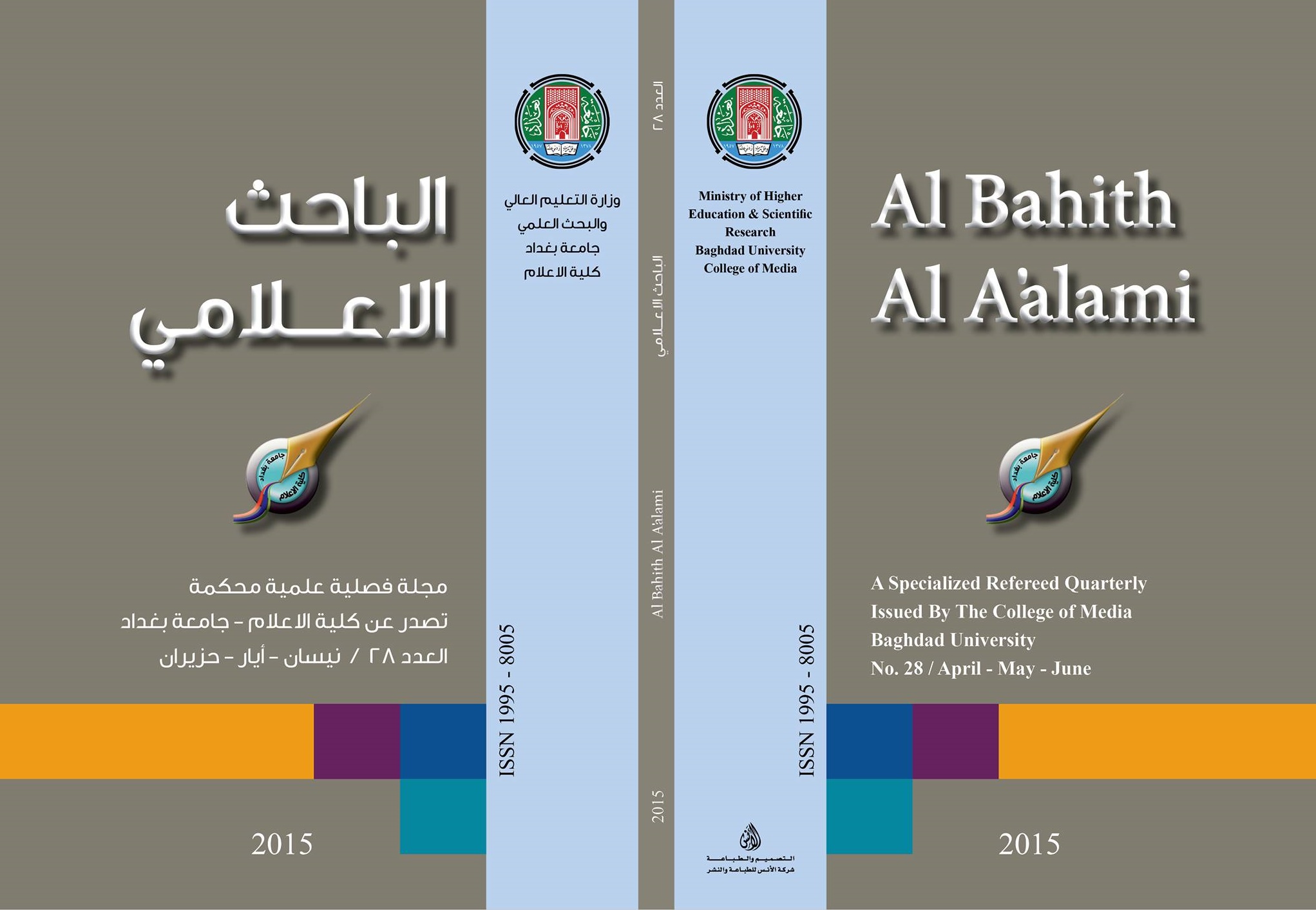Pictures of neighboring countries to the Iraqi public
DOI:
https://doi.org/10.33282/abaa.v7i28.200Keywords:
Pictures, neighboring countries, audience, IraqiAbstract
the mental image is so important in human life as one of the major standers for his trends and behavior, and as the human nature requires to interest in things based on how much it’s close to and how much it effects on his interest, So the neighborhood countries was one of the topics that occupied the attention of the Iraqi individual and pushed him to form perceptions of them based on the cultural heritage and the historical relations of Iraq with these countries as well as the actions of neighboring countries on Iraq and the resulting effects on the course of events. the mental image is so important in human life as one of the major standers for his trends and behavior, and as the human nature requires to interest in things based on how much it’s close to and how much it effects on his interest, So the neighborhood countries was one of the topics that occupied the attention of the Iraqi individual and pushed him to form perceptions of them based on the cultural heritage and the historical relations of Iraq with these countries as well as the actions of neighboring countries on Iraq and the resulting effects on the course of events. this research focus on knowing the images witch the Iraqi people carrying against neighboring countries (Jordan, Syria, Turkey, Iran, Kuwait, and Saudi Arabia), I have been using the survey method by preparing a scale form have been distributed in four Iraqi provinces (Baghdad, Anbar, Irbil, and Dhi Qar) by 250 forms and the distribution of forms based on the number of provincial population sample. It was found from the search’s results a variation images of neighboring countries to the Iraqi people, it appeared that Jordan is the most neighboring countries in supporting the stability of the security situation in Iraq, followed by Turkey and Saudi Arabia then Kuwait and Syria, and Iran comes at the last rank, As for the support of neighboring countries for the political process in Iraq after the 2003, the respondents agreed that Iran comes at the first rank, and then followed by Syria, Jordan and Turkey in the same rank, and after them Kuwait and Saudi Arabia finally came. Thus Jordan tops Iraq’s neighboring countries in terms of positive image in Iraqi people minds, followed by Turkey and Kuwait and then Saudi Arabia and then Syria and finally Iran, As for the negative aspects of the images of neighboring countries, Iran comes at the first rank and then followed by Syria and then Kuwait, Turkey, then Saudi Arabia and Jordan finally comes.
Downloads
References
(2) Robert McMullin, Charged Gross, Introduction to Social Psychology, translated by Yasin Haddad (Amman: Dar Wael Publishing, 2002)
(3) Segord N. The true and false fears in Arab-European relations (Beirut: Center for Arab Unity Studies, 1999) (p. 546)
(4) Essam Suleiman Al-Mousa, the image of the Arab in the Western media, the Arab Radio Magazine No. 2, 2002, p
(5) Hilmi Khader Sari, Women as "Other, from the Book of the Other, edited by Tahir Labib (Beirut: Center for Arab Unity Studies 1999) (p. 763)
[6] Abdul Razzaq al-Dulaimi, Public Relations and Globalization (Amman: Dar Jarir, 2005) (p. 71)
(7) Suleiman Saleh, Media and the Image Industry (Kuwait: Al Falah Library, p
(8) Ahmed Zayed, The Psychology of Relations between Groups (Kuwait: The World of Knowledge Series, 2006) (p. 128129)
(9) Mohammed Qirat, Formation of Social Awareness (Kuwait: Al Falah Library for Publishing and Distribution, 2007) (p. 39)
Downloads
Key Dates
Published
Issue
Section
License
Authors retain copyright and grant the journal right of first publication with the work simultaneously licensed under a Creative Commons Attribution License (CC BY 4.0) that allows sharing the work with recognition of authorship and initial publication in ABBA journal.


















